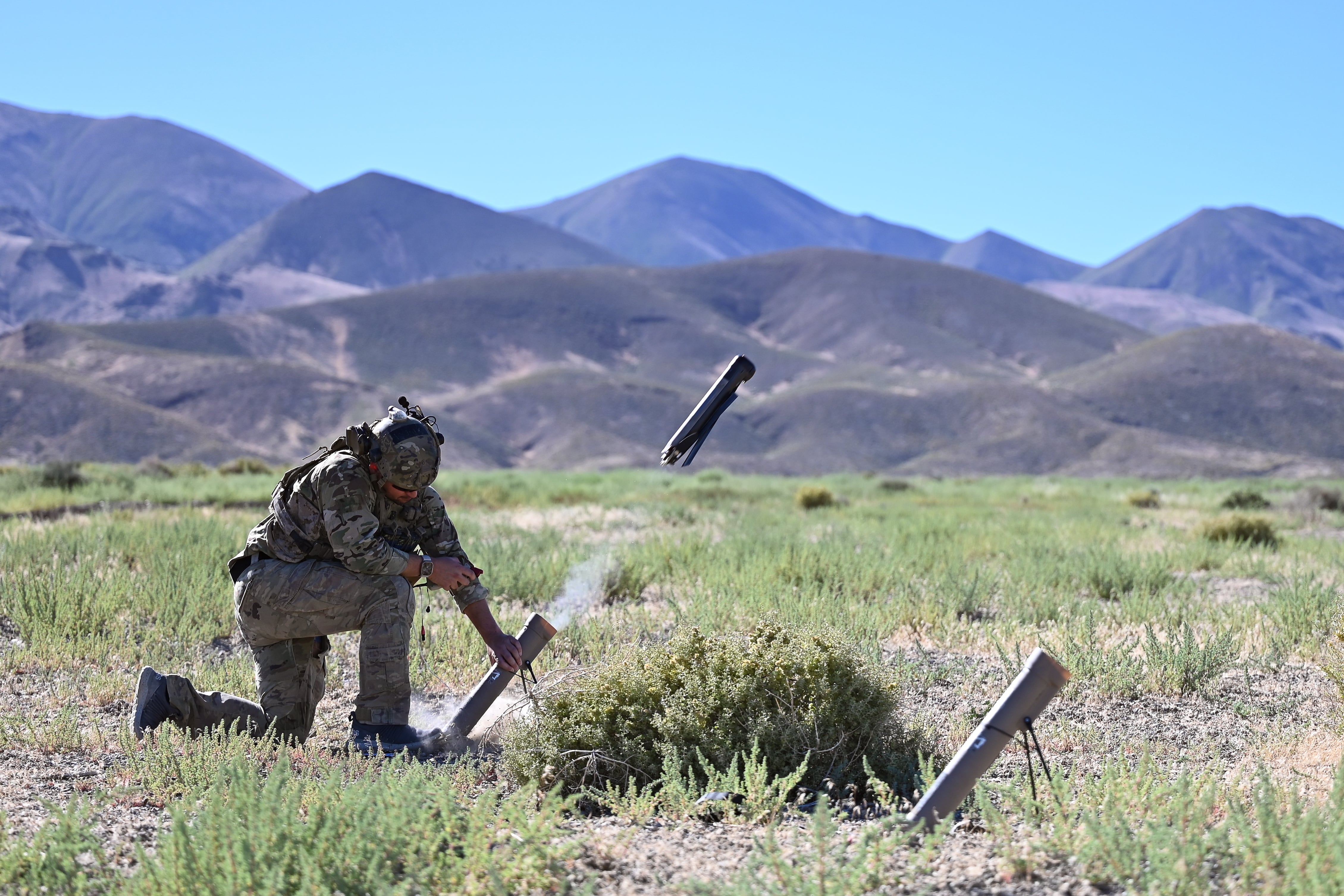The Pentagon unveiled a new round of aerial and maritime drones for Replicator, a massive effort to fast-track the delivery of unmanned weapons systems to the services.
Included in the batch are multiple drones from the Army’s company-level small unmanned aerial system, or UAS, program. The service had selected the Ghost-X, made by Anduril Industries, and the C-100, made by Performance Drone Works.
In a release, the Pentagon said these will offer versatile weapons for the units in the field, useful for targeting or surveilling the enemy.
Replicator will also include Anduril’s Altius-600, a one-way attack drone on contract with the Marine Corps, and the enterprise test vehicle, or ETV. The latter drone has long been rumored as a Replicator candidate, with requirements like a 500-nautical mile range that fit the program’s parameters.
The Air Force and Defense Innovation Unit are considering four vendors for the ETV: Anduril, Integrated Solutions for Systems Inc., Leidos Dynetics and Zone 5 Technologies.
Wednesday’s statement marks the second — and most specific — time the Pentagon has disclosed what systems it’s buying for the program. Deputy Secretary of Defense Kathleen Hicks announced Replicator last year at a tech conference in downtown Washington, pledging to field thousands of cheap drones by August 2025, or within two years.
Hicks has said her goal is to deter China, which has a far larger population and manufacturing sector. In part due to that aim, the Pentagon hasn’t listed much of what it’s buying through Replicator. Before this week, the Defense Department had only publicly acknowledged one drone included in the program: AeroVironment’s Switchblade 600, another one-way attack drone.
Such furtiveness has at times chafed companies hoping to compete for funding. The Defense Department secured $500 million for fiscal year 2024, with the same amount included in the defense budget request for fiscal year 2025, which Congress hasn’t yet passed.
In Wednesday’s statement, the Pentagon said that it considered 500 commercial firms for Replicator, awarding contracts to 30 companies. A further 50 are included as subcontractors.
In a separate release, Anduril said it was “rapidly” increasing production of its Altius and Barracuda drones in order to meet the Pentagon’s demand.
“The Replicator initiative is demonstrably reducing barriers to innovation, and delivering capabilities to warfighters at a rapid pace,” Hicks wrote in the statement, which notes that other systems in the program remain classified.
The deputy has long argued that Replicator is a way of doing business rather than a discrete program. Buying and fielding systems at a faster pace has long been a challenge under the strictures of Pentagon bureaucracy, and Replicator is meant to offer a faster path for urgent needs.
The second phase of the program will focus on weapons that can counter the kind of cheap drones Replicator is now buying — a particular issue for American forces in the Middle East, who have spent the last year shooting down cheap weapons fired by Iran-backed militants using far more expensive interceptors.
To make sure Replicator drones can work together, the Pentagon is relying on commercial firms to provide what Hicks’ statement calls “integrated enablers,” or software that can coordinate “hundreds of thousands” of assets.
The statement said these will be able to resist jamming, which has destroyed countless drones during the war in Ukraine.
The Pentagon has also committed to announcing those awards at a later date.
Noah Robertson is the Pentagon reporter at Defense News. He previously covered national security for the Christian Science Monitor. He holds a bachelor’s degree in English and government from the College of William & Mary in his hometown of Williamsburg, Virginia.




